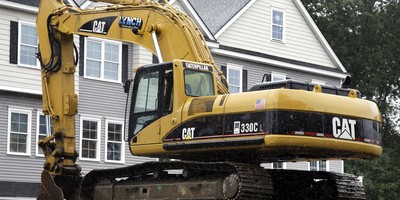President Obama met this week with the chairmen of the congressional budget committees and called for a bipartisan effort to "pass a budget that puts this nation on the road to lasting prosperity." But the fiscal 2010 budget he presented is a startling call to political class war.
It depicts America as populated by an aggrieved middle class exploited by an upper class luxuriating in ill-gotten gains.

"While middle-class families have been playing by the rules, living up to their responsibilities as neighbors and citizens, those at the commanding heights of our economy have not," says Obama's budget document. "There's nothing wrong with making money, but there is something wrong when we allow the playing field to be tilted so far in the favor of so few."
To fix this alleged problem, Obama's budget points -- like his famous sidewalk colloquy with "Joe the Plumber" -- to using the tax code to spread the wealth around.
"For the better part of three decades, a disproportionate share of the nation's wealth has been accumulated by the very wealthy," says the budget. "Yet, instead of using the tax code to lessen these increasing wage disparities, changes in the tax code over the past eight years exacerbated them."
As evidence of this, the Obama budget cites stagnation in real median household income.
"On top of that, this was the first economic recovery since World War II where real median household income did not rise above its previous peak," says the budget.
Recommended
But is this an intellectually honest representation of the recent history of income growth and distribution in the United States? Have we seen wealth progressively concentrating in the hands of a few "for the better part of three decades?"
By carefully presenting a part of the truth, Obama's budget artfully obscures the whole truth.
The budget cites the Census Bureau as its source for "real median household income." So I looked to the Census Bureau for a fuller picture of trends in household income.
In August 2008, the Census Bureau published a report titled, "Income, Poverty and Health Insurance Coverage in the United States: 2007." I called the bureau and was assured this was its latest report on real median household income and that Table A-1 in the report contains the definitive historical numbers of median household income as well as the percentage of the population that fell into each of nine annual-income brackets ranging from "Under $5,000" to "$100,000 and over."
All the figures in this Census Bureau table are in inflation-adjusted 2007 dollars.
The table shows that real median household income in the United States was $38,771 in 1967 and $50,233 in 2007. That means it jumped $11,462 in 40 years, or 29.56 percent.
But has income accumulated in the hands of the few at the expense of a growing underclass? Table A-1 shows the opposite: The percentage of American households in each of the upper two income brackets has increased, while the percentage of households in each of the lower seven income brackets has decreased
There simply are more "rich" households in America today and fewer "poor" households.
In 1967, only 5.4 percent of households were in the "$100,000 and over" income bracket (in inflation-adjusted 2007 dollars). In 2007, 20.2 percent were in that bracket -- making it now the most populated of all brackets.
One out of every five American households is "rich."
In 1967, only 7.7 percent of American households were in the second-highest bracket, earning between $75,000 and $99,999 per year. By 2007, 11.9 percent were in that bracket.
So in 1967, 13.1 percent of American households earned more than $75,000, and 86.9 percent earned less. In 2007, 32.1 percent of American households earned more than $75,000, and 67.9 percent earned less.
As a share of the population, wealthier people today are almost two-and-a-half times as numerous as they were when the hippie generation was celebrating its Summer of Love.
But what about Obama's claim that in the last growth cycle median household income never rose above its peak from the previous cycle? There is truth in this.
"Between 2006 and 2007, real median household income rose from $49,568 to $50,233 (Figure 1-Table 1) -- a level not statistically different from the 1999 pre-recession income peak," says the Census Bureau's report.
The Figure 1 referred to is a graph that shows the relationship between recessions and real median household income. Its lesson is simple: When the economy declines, household incomes decline. When the economy grows, household incomes grow. Mostly, our free economy has grown, so incomes have grown.
Obama's class-war budget is based on his belief that he can use the federal tax code to keep incomes down -- and still have the economy go up.

























Join the conversation as a VIP Member